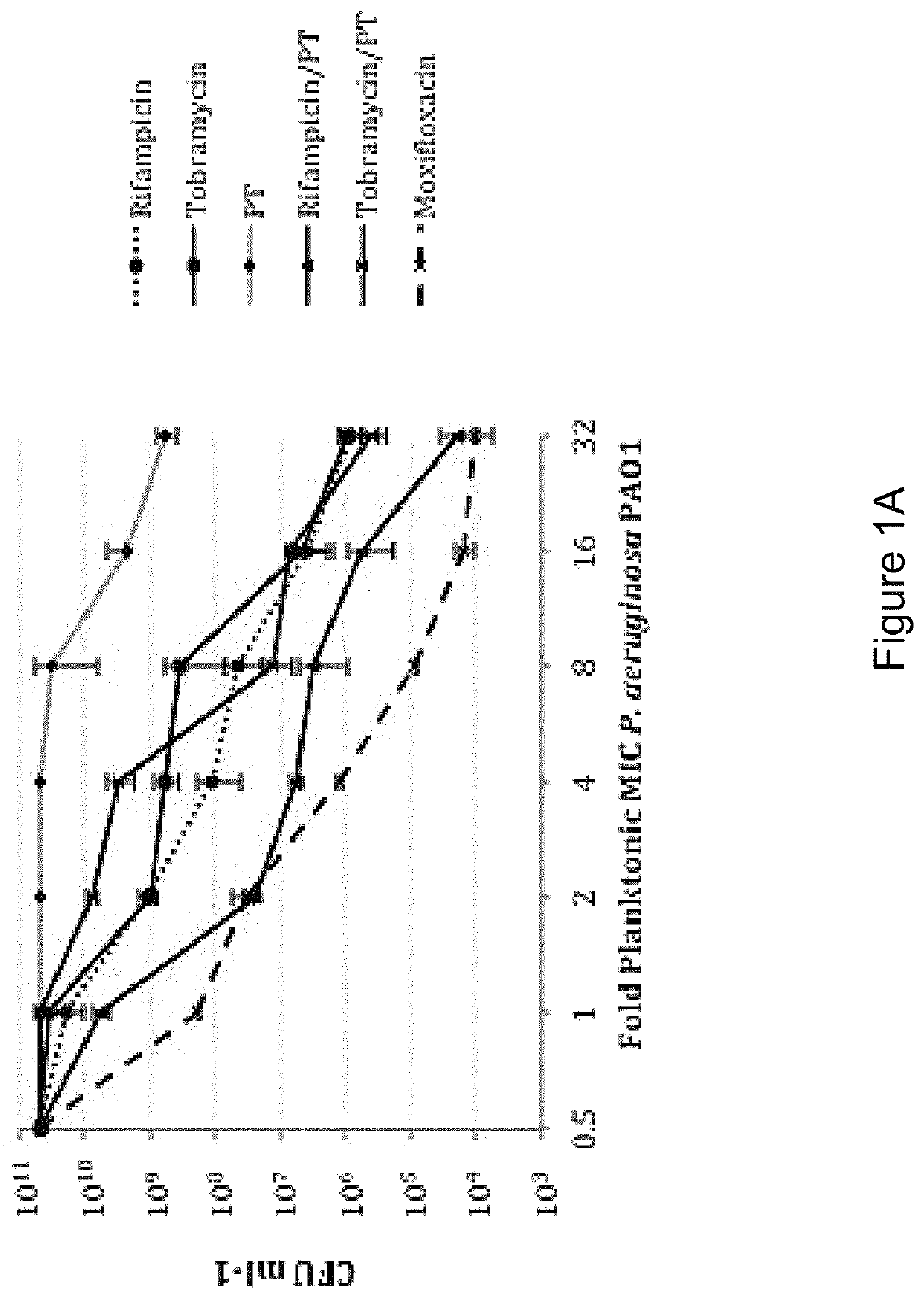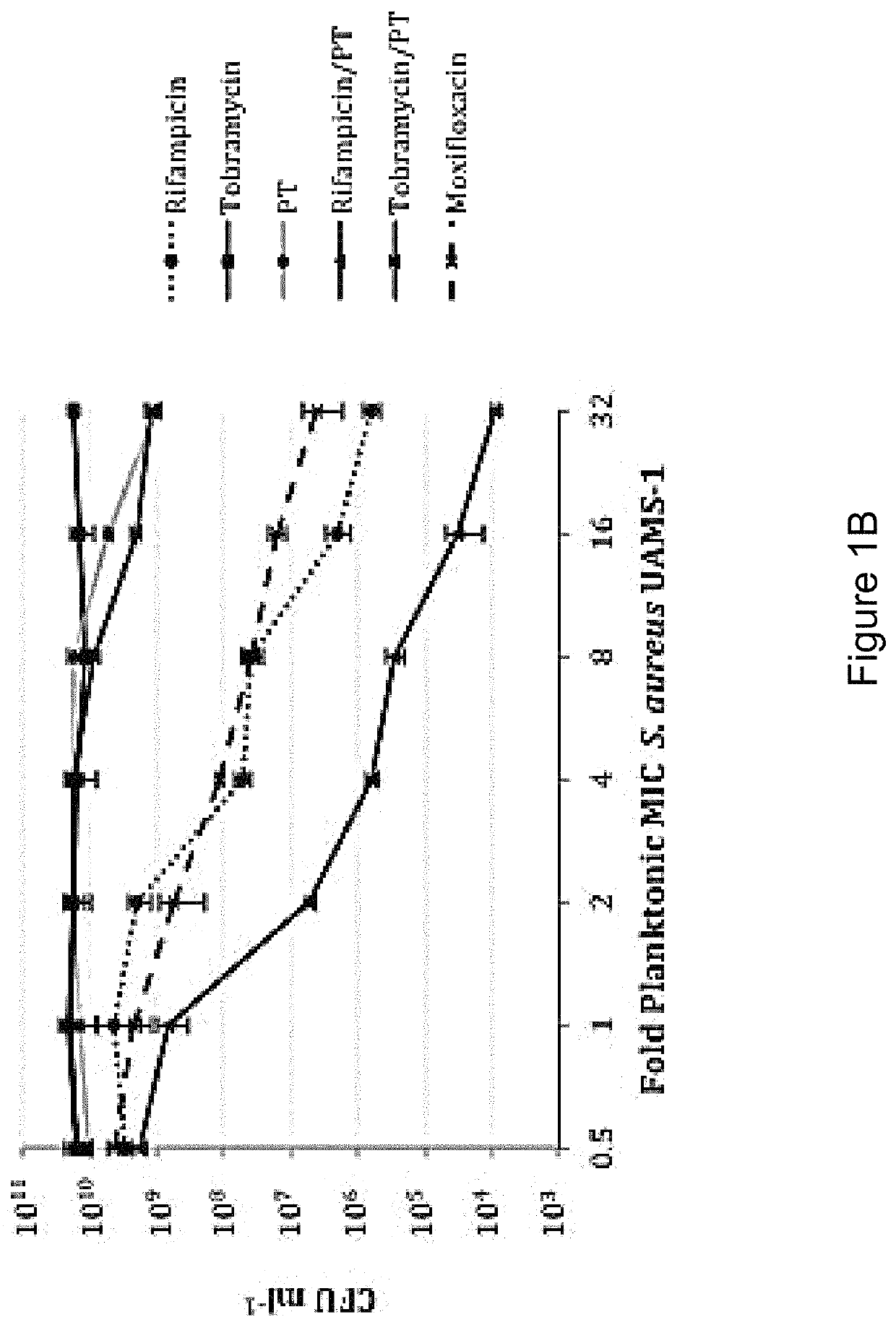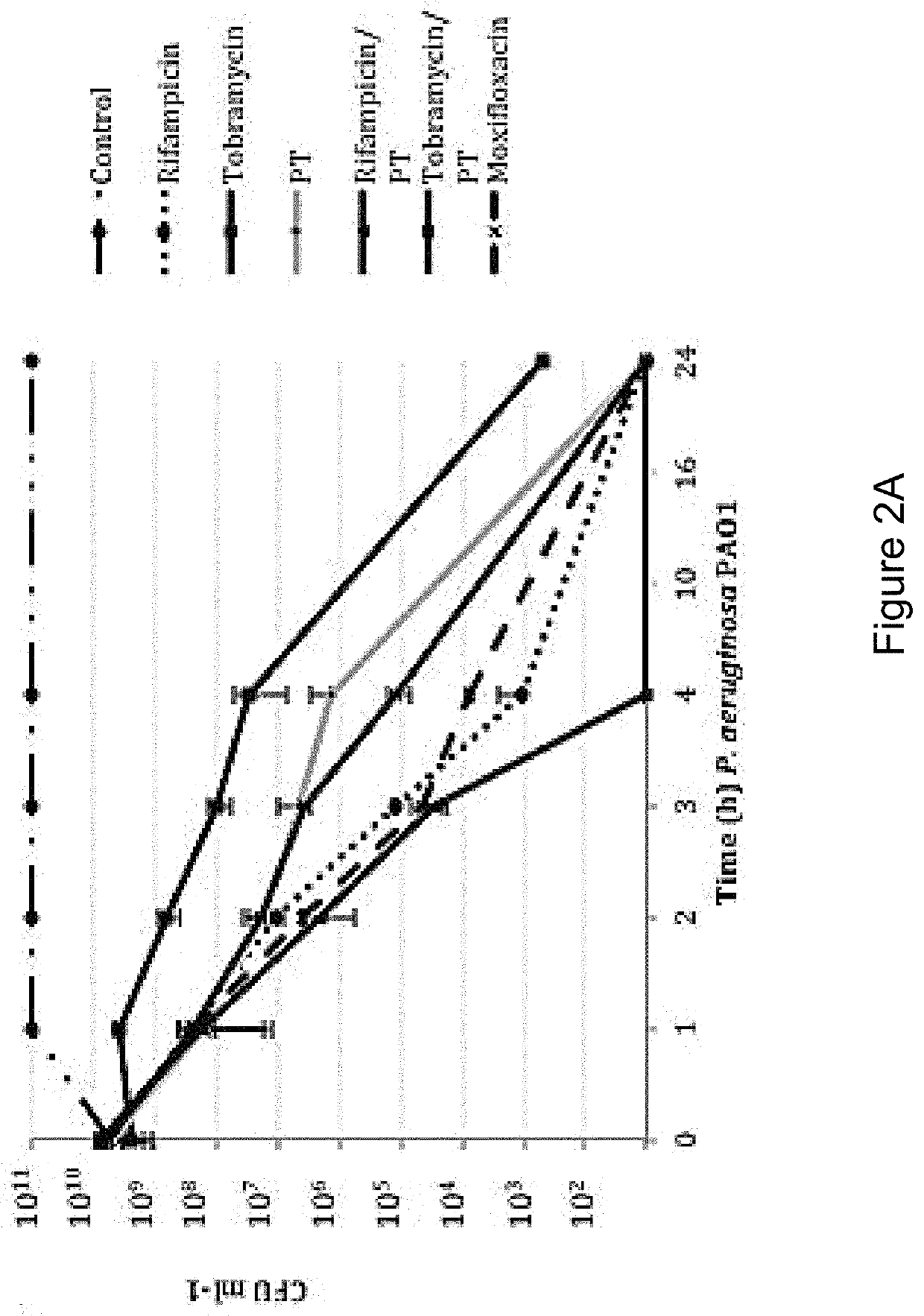Pharmaceutical composition containing polymyxin B/trimethoprim based therapeutics
a polymyxin and composition technology, applied in the field of antibacterial compositions, can solve the problems of bacterial corneal infection (keratitis) being a potentially devastating ophthalmic disease, complex and vision-threatening ophthalmic or ocular disorders/diseases, and their side effects and effectiveness less than desired,
- Summary
- Abstract
- Description
- Claims
- Application Information
AI Technical Summary
Benefits of technology
Problems solved by technology
Method used
Image
Examples
example 1
Materials and Methods
Bacterial Strains and Growth Conditions
[0145]Bacterial strains used in these studies include the conventional laboratory strains Pseudomonas aeruginosa PA01 and Staphylococcus aureus UAMS-1, both of which are antibiotic susceptible and capable of forming robust biofilms. See Gillaspy A F, Hickmon S G, Skinner R A, Thomas J R, Nelson C L, Smeltzer M S. Role of the accessory gene regulator (agr) in pathogenesis of staphylococcal osteomyelitis. Infection and immunity 1995; 63:3373-3380. Seven clinical keratitis isolates of Pseudomonas aeruginosa, were collected from the Flaum Eye Institute, Rochester N.Y. and 25 clinical isolates of Staphylococcus aureus from geographically distinct regions of the country where purchased from International Health Management Associates (IHMA; Schaumburg, Ill.). For experiments requiring planktonic cultures, the indicated organism was grown overnight in Luria-Bertani broth (LB; Franklin Lakes, N.J.), diluted 1:100 in fresh media, gro...
example 2
Identification of Compounds that Improve the Antimicrobial Activity of Polymyxin B / Trimethoprim
[0155]While ophthalmic solutions containing the antibiotics polymyxin B+trimethoprim display broad-spectrum antimicrobial activity and low resistance-associated clinical failure, the combination's therapeutic effectiveness has been limited, in part, by its relatively low potency toward certain bacterial species, slow kill-kinetics, and poor antibiofilm properties. To identify agents that could potentially improve the antimicrobial performance of polymyxin B / trimethoprim ophthalmic solutions members of an 853 member FDA approved drug library were initially screened for agents that confer antibacterial activity in the presence of an otherwise sub-inhibitory concentration of polymyxin B / trimethoprim. To do so, 105 CFUs of S. aureus strain UAMS-1 were inoculated in individual wells of a microtiter plate supplemented with 1.2 μg ml−1 of polymyxin B / trimethoprim, (0.25×MIC). Library members were...
example 3
Rifampicin and Tobramycin Improve the Antimicrobial Activity of Polymyxin B / Trimethoprim
[0160]In order to distinguish between agents with independent antibacterial activity from those that potentiate the antimicrobial activity of polymyxin B / trimethoprim, fractional inhibitory concentration (FIC) measures were performed in checkerboard format using rifampicin (rifamycin), tobramycin (aminoglycoside) and besofloxacin (fluoroquinolone) toward planktonic S. aureus and P. aeruginosa cultures. As shown in Table 4, antimicrobial susceptibility testing revealed that the MIC of P. aeruginosa strain PA01 toward polymyxin B / trimethoprim was 0.41 μg ml−1, whereas the MICs for rifampicin, tobramycin and besifloxacin in isolation were 15.6 μg ml−1, 0.48 μg ml−1, and 1.56 μg ml−1 respectively. The combination of rifampicin with polymyxin B / trimethoprim resulted in an additive effect against P. aeruginosa (FIC=0.637), suggesting that it potentiates the antimicrobial activity of polymyxin B / trimeth...
PUM
| Property | Measurement | Unit |
|---|---|---|
| pH | aaaaa | aaaaa |
| pH | aaaaa | aaaaa |
| pH | aaaaa | aaaaa |
Abstract
Description
Claims
Application Information
 Login to View More
Login to View More - R&D
- Intellectual Property
- Life Sciences
- Materials
- Tech Scout
- Unparalleled Data Quality
- Higher Quality Content
- 60% Fewer Hallucinations
Browse by: Latest US Patents, China's latest patents, Technical Efficacy Thesaurus, Application Domain, Technology Topic, Popular Technical Reports.
© 2025 PatSnap. All rights reserved.Legal|Privacy policy|Modern Slavery Act Transparency Statement|Sitemap|About US| Contact US: help@patsnap.com



